The 50 Greatest Players in St. Louis Cardinals History
Robert W. Cohen
THE SCARECROW PRESS, INC.
Lanham Toronto Plymouth, UK
2013
Published by Scarecrow Press, Inc.
A wholly owned subsidiary of The Rowman & Littlefield Publishing Group, Inc.
4501 Forbes Boulevard, Suite 200, Lanham, Maryland 20706
www.rowman.com
10 Thornbury Road, Plymouth PL6 7PP, United Kingdom
Copyright 2013 by Scarecrow Press, Inc.
All rights reserved . No part of this book may be reproduced in any form or by any electronic or mechanical means, including information storage and retrieval systems, without written permission from the publisher, except by a reviewer who may quote passages in a review.
British Library Cataloguing in Publication Information Available
Library of Congress Cataloging-in-Publication Data
Cohen, Robert W.
The 50 greatest players in St. Louis Cardinals history / Robert W. Cohen.
pages cm.
Includes bibliographical references and index.
ISBN 978-0-8108-9215-6 (cloth : alk. paper) ISBN 978-0-8108-9216-3 (ebook)
1. Baseball playersMissouriSt. LouisBiography. 2. St. Louis Cardinals (Baseball team)History. I. Title. II. Title: Fifty greatest players in St. Louis Cardinals history.
GV875.S3 C65 2013 2013015309
796.357/640977866dc23
 The paper used in this publication meets the minimum requirements of American National Standard for Information SciencesPermanence of Paper for Printed Library Materials, ANSI/NISO Z39.48-1992. Printed in the United States of America.
The paper used in this publication meets the minimum requirements of American National Standard for Information SciencesPermanence of Paper for Printed Library Materials, ANSI/NISO Z39.48-1992. Printed in the United States of America.
This book is dedicated to Stan Musial, the greatest Cardinal of them all,
whose passing in January 2013 deeply saddened baseball fans everywhere.
Contents
Introduction
The Cardinal Legacy
Originally founded by St. Louis saloon and beer garden owner Chris Von der Ahe, who dubbed his new team the Brown Stockings (or Browns), the franchise known since 1900 as the St. Louis Cardinals first entered the world of professional baseball in 1882 as a charter member of the newly formed American Association (AA). Established, in part, to offer fans the beer and Sunday baseball forbidden by the older National League (NL), the AA lasted only ten seasons. During that time, however, the Browns developed into one of the circuits most formidable squads. Led by hard-hitting outfielder Tip ONeill and staff aces Bob Caruthers and Dave Foutz, the Browns captured four consecutive league championships from 1885 to 1888, before finishing second, third, and second again the next three seasons.
After the AA folded at the conclusion of the 1891 campaign, the NL absorbed the Browns, who struggled for most of the next three decades, even after changing their names to the Cardinals in 1900. The NL franchise situated in the city of St. Louis finished higher than fifth just three times between 1892 and 1920; however, with Branch Rickey running the team and Rogers Hornsby developing into the senior circuits greatest player, the Cardinals gradually rose to prominence during the 1920s. The innovative Rickey helped the Cardinals pioneer baseball into a new era by building the teams farm system. Meanwhile, Hornsby established himself as the NLs premier hitter by winning six straight batting titles between 1920 and 1925, compiling a mark in excess of .400 on three separate occasions, and capturing two Triple Crowns.
With Hornsby leading the way, the Cardinals won their first NL pennant in 1926, after which they stunned the baseball world by defeating the heavily favored New York Yankees in seven games in the World Series. The Cardinals finished atop the NL standings again in 1928, although the Yankees gained a measure of revenge against them in the Fall Classic by sweeping their NL counterparts in four straight games.
St. Louis captured consecutive pennants in 1930 and 1931, losing to a powerful Philadelphia Athletics team in the 1930 World Series, before upsetting them in the following years Fall Classic. After a two-year hiatus, a Cardinals club frequently referred to as The Gas House Gang for its ability to drive opposing teams crazy with its aggressive style of play returned to the World Series. The Redbirds ended up defeating the Detroit Tigers in a hotly -contested seven-game 1934 World Series behind the stellar pitching of thirty-game winner Dizzy Dean and the timely hitting of slugging outfielder Joe Ducky Medwick.
Although the New York Yankees created baseballs greatest dynasty during the 1920s and 1930s, the American public found itself gravitating more toward the Cardinals Gas House Gang. A gritty, tenacious, battling bunch that wore dirty uniforms and quarreled amongst themselves as much as they fought with the opposition, the Cardinals represented the vast majority of Americans, who had to struggle to survive during the Great Depression. Furthermore, with the Dodgers and Giants still situated in New York, the Cardinals represented Major League Baseballs only link to the Midwest. All cities west of the Mississippi and south of the Mason-Dixon Line broadcasted Cardinals games over the radio, making the Redbirds Americas Team in many ways.
Although the Cardinals failed to make another appearance in the Fall Classic until 1942, they ended up representing the senior circuit in four of the next five World Series, proving victorious in three of those years. Future Hall of Famers Stan Musial and Enos Slaughter led the Cardinals during their most successful period in franchise history. Unfortunately, the Redbirds maintained their level of dominance for just a brief period of time, coming up short in their bid to return to the World Series seventeen straight times between 1947 and 1963.
However, with the addition of speedster Lou Brock, the emergence of Bob Gibson as a truly great pitcher, and the continued outstanding play of veterans Ken Boyer, Bill White, and Curt Flood, the Cardinals rose to the top of the NL standings again in 1964, after which they helped put an end to the Yankee dynasty by defeating their American League counterparts in seven games in the World Series. The Dodgers represented the senior circuit in the Fall Classic in each of the next two seasons, but the Cardinals reclaimed the top spot in the NL standings in both 1967 and 1968, defeating Boston in seven games in the 1967 World Series, before losing to Detroit in seven games the following year.
The Cardinals subsequently entered their next period of mediocrity, failing to advance to the postseason again until 1982. Nevertheless, they made their return to postseason play a successful one, capturing the NL pennant by sweeping Atlanta in the National League Championship Series before edging out Milwaukee in seven games in the World Series. St. Louis returned to the Fall Classic in 1985 and 1987, only to lose in seven games both times, first to Kansas City, and then to Minnesota.
The Cardinals remained respectable the next decade and a half, earning a postseason berth in four of the next sixteen seasons. But they didnt make it back to the World Series again until 2004, when the Boston Red Sox ended eighty-six years of futility by sweeping them in four straight games in the Fall Classic. Led by slugging first baseman Albert Pujols, the Cardinals earned return trips to the World Series in 2006 and 2011, capturing their tenth and eleventh world championships by defeating Detroit and Texas, respectively.
The Cardinals eleven World Series victories place them second only to the New York Yankees among major-league teams. Meanwhile, only the Giants and Dodgers, who have captured championship honors in the senior circuit twenty-two and twenty-one times, respectively, have won more than the eighteen NL pennants to which the Cardinals can lay claim.
In addition to the level of success the Cardinals have reached as a team throughout the years, a number of players have attained notable individual honors while wearing a Redbirds uniform. The Cardinals boast nineteen Most Valuable Player (MVP) winnersmore than any other NL team. They have also featured three Triple Crown winners and twenty-two batting champions. Meanwhile, thirty-five members of the National Baseball Hall of Fame spent at least one full season playing in St. Louis.
Next page
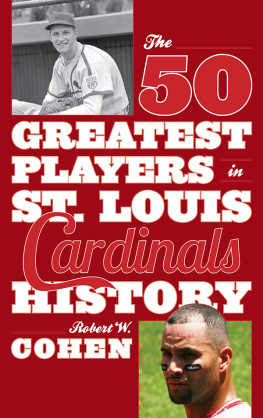
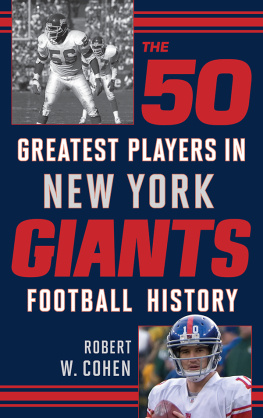
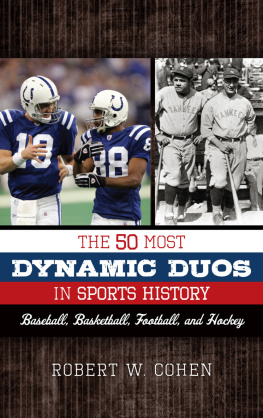

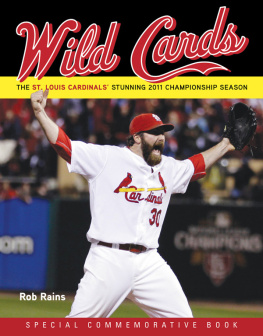
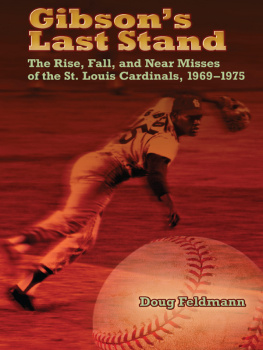
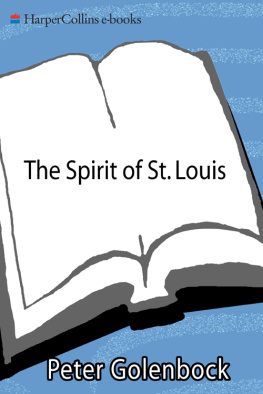
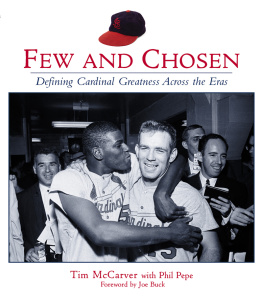

 The paper used in this publication meets the minimum requirements of American National Standard for Information SciencesPermanence of Paper for Printed Library Materials, ANSI/NISO Z39.48-1992. Printed in the United States of America.
The paper used in this publication meets the minimum requirements of American National Standard for Information SciencesPermanence of Paper for Printed Library Materials, ANSI/NISO Z39.48-1992. Printed in the United States of America.